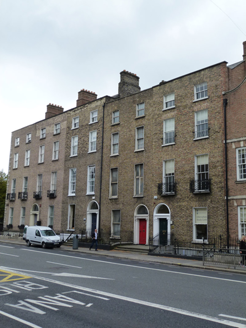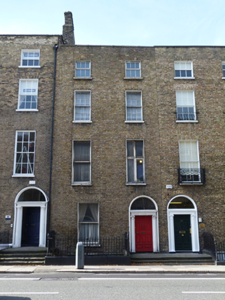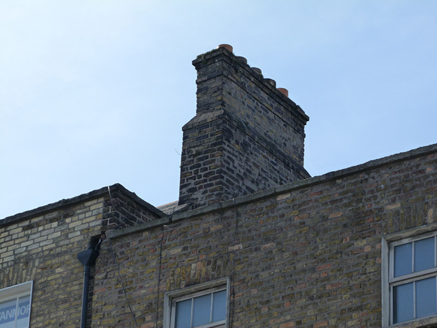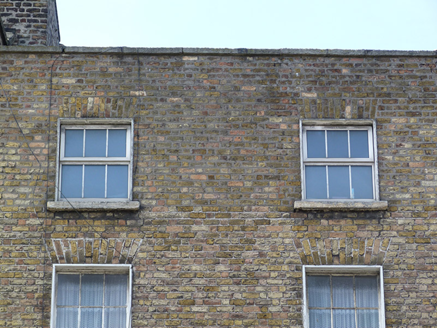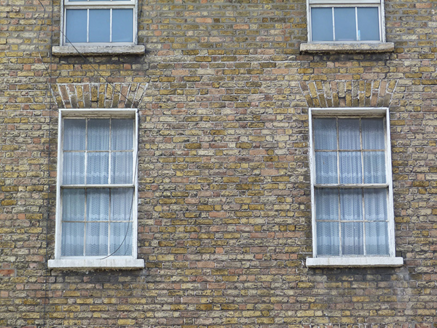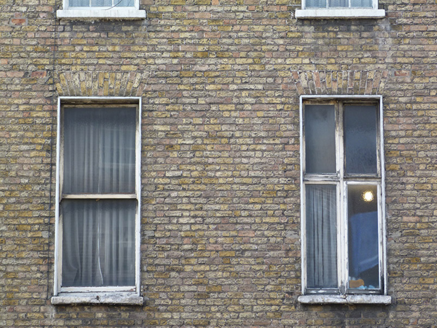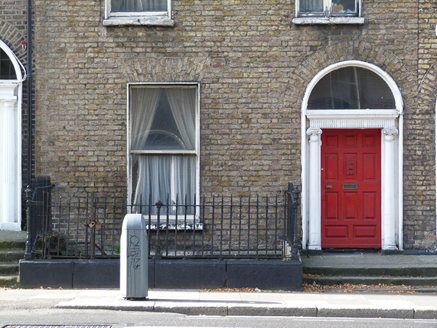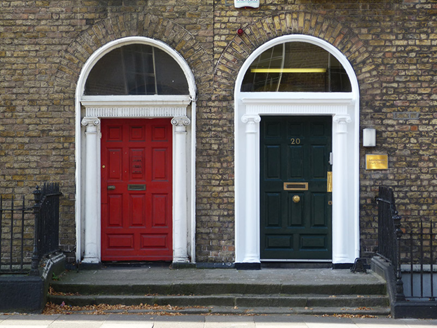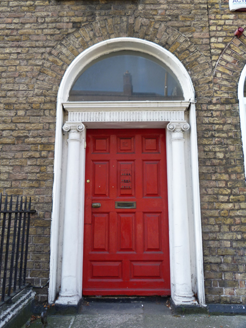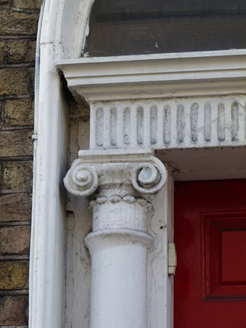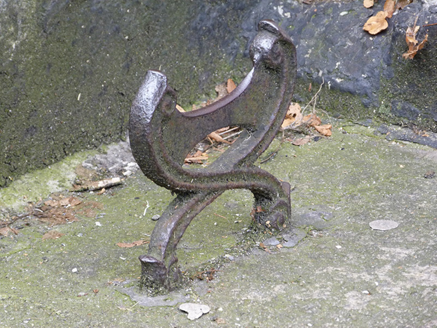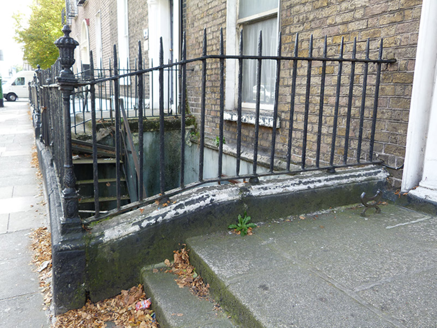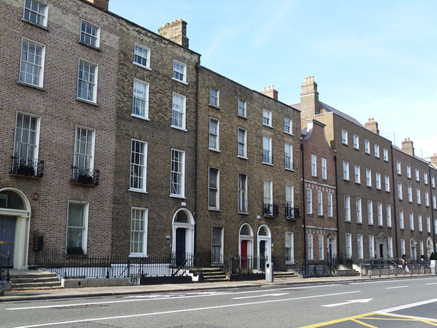Survey Data
Reg No
50920294
Rating
Regional
Categories of Special Interest
Architectural, Artistic
Original Use
House
In Use As
Apartment/flat (converted)
Date
1800 - 1840
Coordinates
316247, 232988
Date Recorded
29/09/2015
Date Updated
--/--/--
Description
Attached two-bay four-storey over basement former townhouse, built c. 1820, now in use as apartments. M-profile pitched roof, hipped to west end, hidden behind brick parapet with granite coping, having shouldered brick chimneystacks with replacement clay pots to east party wall, parapet gutters and replacement uPVC rainwater goods to east end. Brown brick walls laid in Flemish bond over granite plinth course and rendered walls to basement. Square-headed window openings with granite sills, patent reveals and brick voussoirs. Possibly original six-over-six timber sliding sash windows to second floor, one-over-one replacements with cavetto horns to ground and first floors, replacement timber casement to west-side of first floor and uPVC casements to third floor. Round-headed door opening with brick voussoirs, moulded rendered reveals and Ionic columns supporting fluted frieze and cornice, having plain fanlight and raised-and-fielded timber panelled door with brass furniture. Shared granite entrance platform with cast-iron boot scraper and granite steps, flanked by iron railings with decorative cast-iron corner posts over granite plinth, continuing to east to enclose basement area. Replacement steel steps lead from street to basement level. Street-fronted on south side of Leeson Street Lower, with two-storey modernised mews building fronting onto Convent Place.
Appraisal
A typical Georgian townhouse, the restrained classical design is enlivened by the Ionic doorcase which represents the work of a skilled artisan. The iron work railings and boot scraper are noteworthy features. Although it has lost some historic fabric, paired with No. 20 to the west, the building contributes to the historic streetscape in the heart of the south Georgian core. Leeson Street forms part of an ancient routeway, Suesey Street, leading from the city towards Donnybrook. Located within the Fitzwilliam Estate, which covered much of the south-east of the city, the street was named after Joseph Leeson, 1st Earl of Milltown. Plots were leased for development in the mid-eighteenth century but, apart from the north-western end, it remained undeveloped until the 1780s and was largely completed by the early nineteenth century.
